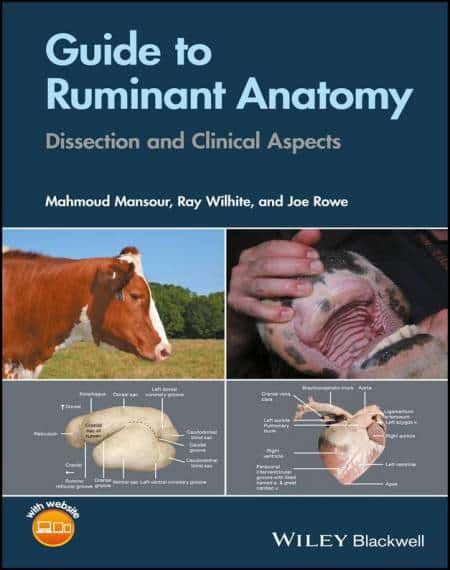This is the first edition of the Guide to Ruminant Anatomy: Dissection and Clinical Aspects for first‐year veterinary students who are learning ruminant anatomy for the first time.
Guide to Ruminant Anatomy – Dissection and Clinical Aspects

The aim of this book is to fulfill a need for an illustrated ruminant anatomy guide using real dissection images. The book contains images from prosected caprine (goats), ovine (sheep), and Bos taurus (cattle) specimens.
We have strived to strike a balanced approach between depth of coverage and our desire to avoid inclusion of unnecessary details that you will not use in class. We have attempted to provide a reasonable elaboration for students who may be studying mammalian anatomy for the first time, as the case in overseas schools in Africa. However, the justification for the level of detail provided here is largely based on clinical relevance and time allotted to ruminant anatomy in curricula of veterinary schools in North America.
For comprehensive details of anatomic structures, the reader is advised to consult some of the reference textbooks listed in Appendix B. Each chapter of the book begins with a list of learning objectives. These are concise statements about what the students are expected to know when they complete each chapter. Additionally, a goal statement is provided for each subject matter within each chapter.
In many veterinary schools, the goat is used as model for teaching ruminant anatomy because of its small size and low cost. In practice, however, the cow is the focus of most clinical work. To account for both species, we give accounts for comparative anatomy and, when applicable, we note where goats and cattle differ. Because of the importance of physical diagnosis in clinical practice, we provide a small section on topography at the end of each chapter. Clinically relevant anatomy is briefly high-lighted in separate boxes. The dissection instructions are shown in italics at various sections but we also provide detailed instructions for dissection of the goat cadaver, and a concise list of the important structures for identification in each lab. A lab identification list is located at the end of each chapter.
Password: pdflibrary.net
